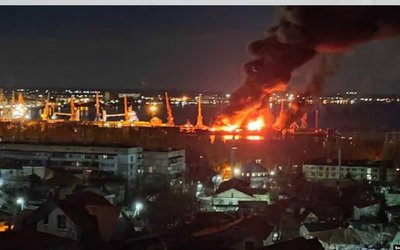Since Ebola is so much in the news, we need to find out what may be relevant for us in Nepal. Ebola virus first appeared in 1976 and one of the countries to be affected then was the Democratic Republic of Congo. A patient who lived in a village near the Ebola River in the Congo was diagnosed with the disease at that time, hence the name Ebola. It was originally called Ebola Hemorrhagic Disease, but now it is known as Ebola Virus Disease ( EVD). The reason is that all of the patients with Ebola infection did not have a bleeding problem ( hemorrhage) to justify the name.
A complication of a common disease (dengue) in the Terai also got a recent name change from dengue hemorrhagic fever to simply severe dengue for probably similar reasons. This name change is useful as it is more accurate and will not mislead clinicians and treating physicians.
Because Ebola is not transmitted through airborne infection, the danger of transmission is many fold smaller than the run- of the-mill flu or a cold.But unlike the cold or flu, EVD is deadly. EVD is chiefly transmitted through direct mucous membrane or broken skin. So, blood, body fluids (for example, sexual contact), indirect contact with environments contaminated with such fluids can lead to transmission. In Africa in burial ceremonies of Ebola victims, where mourners come in direct contact with the corpse, has lead to infections.
The symptoms and signs of this disease are very non- specific and could be mixed up with many common Nepali diseases. Patients present with fever, malaise,sore throat which gradually may progresses to involving the liver and the kidneys and also may lead to internal and external bleeding. In Nepal there are many common diseases such as typhoid, murine typhus, hepatitis, and leptospirosis to name just a few that could mimic EVD. The important differentiating point is that crucial travel history of having been to areas of Ebola endimicity in Africa.
So, anyone that comes to see the doctor in Nepal with fever and other non- specific complaints needs to have one important travel-related question asked, has he or she been to Guinea, Liberia, Sierra Leone, Nigeria and surrounding regions. Perhaps it may be easier to ask a simple travel history to Africa in the recent past and then if necessary, ask more detailed questions about countries in the region.
The incubation period (the time from which the organism enters the human host to when the symptoms are first noticed) is said to be from 2 days to 3 weeks. So it may not matter if the person was in Sierra Leone five or six weeks ago and now comes with flu like illness because this will be past the incubation period.
At present there is no vaccine or proven drug therapy to treat the illness. However an interesting ethical problem has risen regarding treatment with an “experimental” drug, ZMapp. Apparently two American aid workers (working in Liberia, now in Emory University Hospital in Atlanta, USA) received this drug and are thought to be improving.
Some activists complained that with hundreds of Africans dying from EVD, how come 2 white American aid workers received the drug? But what if this experimental drug which has not even finished the typical animal testing for side effectshad been used in Africans? The headlines next day would scream that this that Africans were being used as guinea pigs. Ethicists are debating this issue.
In Nepal unless in a patient with flu like illness there is a clear travel history to Africa within a month, there is probably no need to consider the diagnosis of EBD even though many illnesses look initially like Ebola.Ideally our immigration authorities have to be aware of any sick passenger with a travel history to the Ebola-affected areas entering Nepal.

Buddha Basnyat MD
Buddha Basnyat, MD, MSc, FACP, FRCP, Director of the Oxford University Clinical Research Unit-Patan Academy of Health Sciences, Kathmandu.
- Altitude Sickness
- Feb 20, 2018
- Post-earthquake Nepal: The Way Forward
- Dec 13, 2015
- The Annapurna Sanctuary
- Nov 29, 2015
- Diarrhea at the Summit
- Nov 08, 2015
- Altitude Sickness ( AMS, HAPE, HACE)
- Oct 15, 2015















